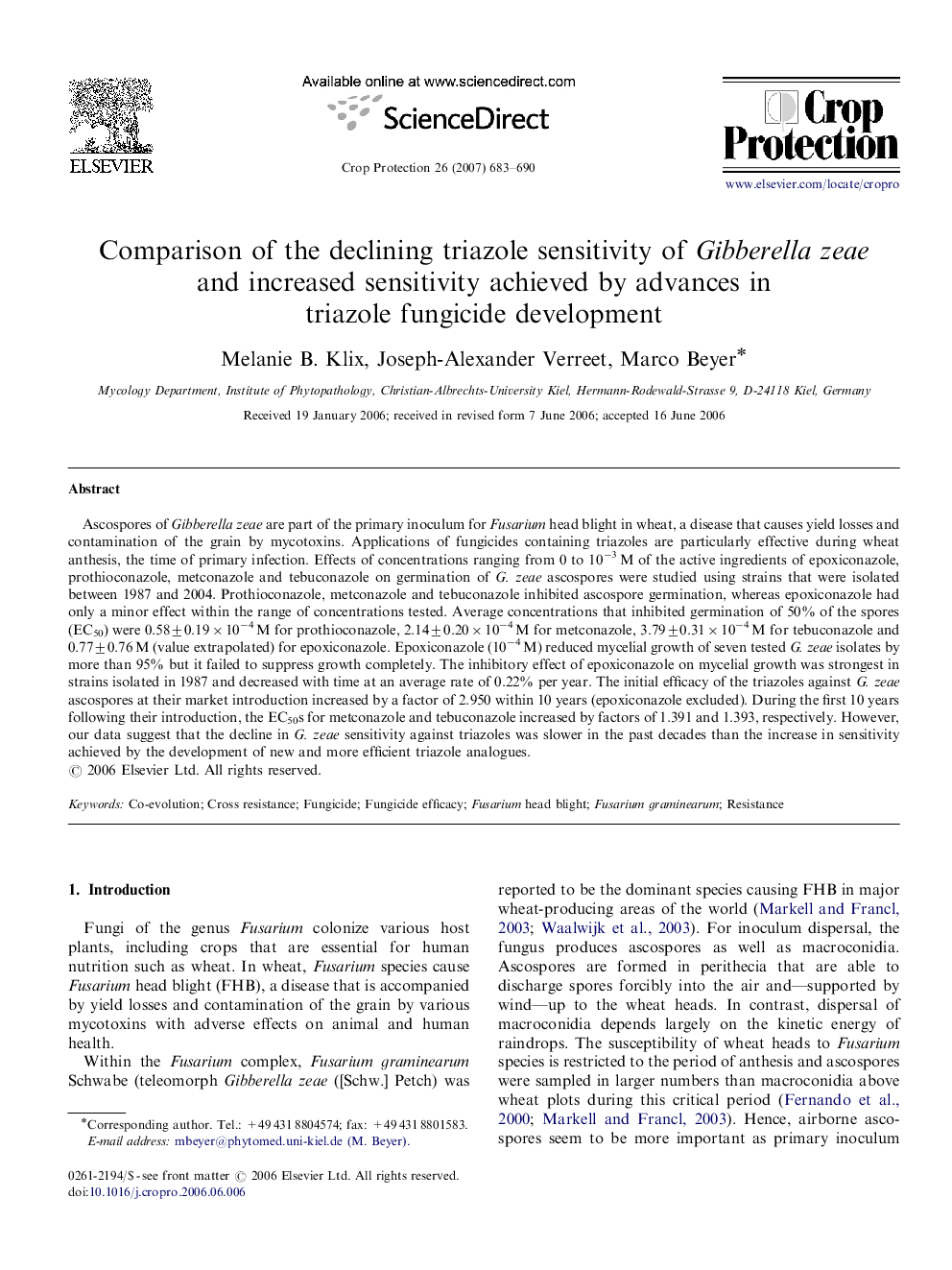| کد مقاله | کد نشریه | سال انتشار | مقاله انگلیسی | نسخه تمام متن |
|---|---|---|---|---|
| 4507198 | 1321343 | 2007 | 8 صفحه PDF | دانلود رایگان |

Ascospores of Gibberella zeae are part of the primary inoculum for Fusarium head blight in wheat, a disease that causes yield losses and contamination of the grain by mycotoxins. Applications of fungicides containing triazoles are particularly effective during wheat anthesis, the time of primary infection. Effects of concentrations ranging from 0 to 10−3 M of the active ingredients of epoxiconazole, prothioconazole, metconazole and tebuconazole on germination of G. zeae ascospores were studied using strains that were isolated between 1987 and 2004. Prothioconazole, metconazole and tebuconazole inhibited ascospore germination, whereas epoxiconazole had only a minor effect within the range of concentrations tested. Average concentrations that inhibited germination of 50% of the spores (EC50) were 0.58±0.19×10−4 M for prothioconazole, 2.14±0.20×10−4 M for metconazole, 3.79±0.31×10−4 M for tebuconazole and 0.77±0.76 M (value extrapolated) for epoxiconazole. Epoxiconazole (10−4 M) reduced mycelial growth of seven tested G. zeae isolates by more than 95% but it failed to suppress growth completely. The inhibitory effect of epoxiconazole on mycelial growth was strongest in strains isolated in 1987 and decreased with time at an average rate of 0.22% per year. The initial efficacy of the triazoles against G. zeae ascospores at their market introduction increased by a factor of 2.950 within 10 years (epoxiconazole excluded). During the first 10 years following their introduction, the EC50s for metconazole and tebuconazole increased by factors of 1.391 and 1.393, respectively. However, our data suggest that the decline in G. zeae sensitivity against triazoles was slower in the past decades than the increase in sensitivity achieved by the development of new and more efficient triazole analogues.
Journal: Crop Protection - Volume 26, Issue 4, April 2007, Pages 683–690